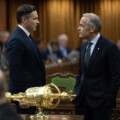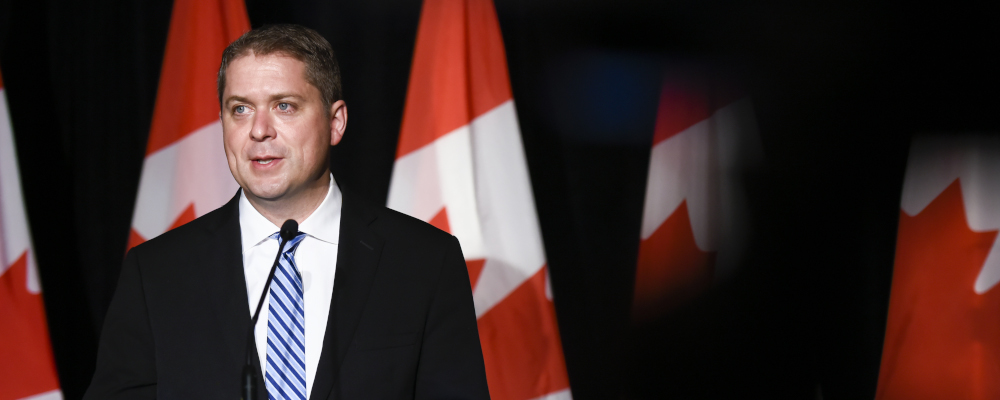Canada’s political history is largely a history of Liberal Party dominance. As political scientist Ken Carty notes in his book Big Tent Politics, the Liberal Party was in power roughly seven of every ten years of the 20th century, and roughly three-quarters of the time following the expansion of the franchise after the First World War. This sustained Liberal electoral success led former politician Jack Pickersgill to observe that Conservative governments in Canada were akin to having the mumps: something one needed to experience only once in a lifetime.
What can explain this record of Liberal success throughout the 20th century? There are several good explanations, but one of the more intriguing is that the Conservatives were simply not very good competitors. Political scientist George C. Perlin penned an insightful book about the party’s minority mentality, which saw it riven by internal conflict and discord throughout most of the 20th century. Perlin gave this tendency toward party infighting a memorable label: the Tory Syndrome.
The core of this argument is that power disciplines parties, whereas a lack of power leads to drifting and infighting. The Liberals and Tories in the 20th century provide case studies of how power can shape the internal life of political parties. The necessities of governing disciplined the Liberals, providing both a rationale and a means for internal party conflicts to be kept to a minimum or, at the very least, conducted largely behind closed doors.
The opposite was true for the Tories. Without power to discipline them, the party turned inward, squabbling over personalities, and engaging in internal battles rather than preparing to win subsequent elections. The Tory Syndrome therefore led to a vicious cycle: the party’s infighting resulted in part from a lack of power, and in turn made it even more difficult to win. In part, this was because long periods in opposition led to the development of an opposition mentality among party elites, entire generations of whom didn’t know what it was like to be in government.
More concerningly, long periods out of office robbed the Tories of memory, experience and specialization that would be necessary when it finally came time to enter government again. Not only did the infighting that characterized the Tory Syndrome make it difficult for the Tories to win elections, it also all but ensured the party would fail when it finally did win and form government.
Which brings us to the contemporary Conservative Party. The 21st century has, thus far, been much kinder to the Tories than was the 20th. Stephen Harper’s time in office gave Tories experience with power and also showed that power could be both won and exercised on their own terms. Conservatives are more confident than they used to be, and there is an expectation that the party is now in the opposition in a normal democratic rotation of power, not in the beginnings of a Tory electoral wasteland.
By the end of the 20th century, the Liberal Party looked less like the giant of Canadian politics and more like three kids standing on each other’s shoulders wearing a trench coat.
Yet the Tory Syndrome lurks just below the surface. Take two recent examples.
Former Conservative leader Andrew Scheer lost the 2019 federal election but boosted both the party’s vote and seat shares, and reduced Justin’s Trudeau’s government to a minority. This was a respectable and even impressive result for Scheer. And, as I’ve argued elsewhere, Scheer’s unrecognized achievement in 2019 was blunting the invasion of Maxime Bernier’s People’s Party from the right. He successfully repelled Bernier and improved his own party’s standing in the process.
Nevertheless, after the election, Scheer was quickly subjected to an organized campaign to push him out as leader. This appeared to be largely orchestrated by people in the party’s orbit, such as consultants, rather than members of the party caucus, who remained almost entirely loyal to Scheer. Facing the prospect of a prolonged campaign of leaks and attacks upon him and his family, Scheer stepped down. But the makings of a long-term period of infighting were all there.
A more recent example is from Alberta, where premier Jason Kenney has been managing simmering discontent over his leadership. This began in response to the government’s pandemic restrictions, which are unpopular among a segment of the party’s rural base and caucus membership. But dissent expanded after Kenney was caught having dinner with cabinet colleagues without socially distancing. Members of the caucus and two cabinet ministers have openly criticized Kenney. There is some evidence of a concerted campaign in the party to leak damaging information about Kenney. Infighting has clearly hobbled the premier, and Rachel Notley’s NDP has seen a boost in support.
As these examples illustrate, it does not take much for the Tory Syndrome to make a comeback.
In his book about the Liberal Party, Carty notes that while the Liberals dominated Canadian politics in the 20th century, there were several indications that the party was showing its age as that century ended. Like other old parties in developed democracies, the Liberal Party suffered a long-term secular decline in its vote share throughout the 20th century, so that by the time Jean Chrétien became prime minister, the party was counting on the electoral system to transform remarkably low vote shares into majority governments.
There was a similar overall decline in the number of provincial governments held by the party, and the Liberals were increasingly reliant on a few regions for their support. By the end of the 20th century, the Liberal Party looked less like the giant of Canadian politics and more like three kids standing on each other’s shoulders wearing a trench coat.
The Conservatives stand to benefit from Liberal decline in the 21st century, but the extent to which they can do so is largely reliant on their own ability to remain disciplined and resist the Tory Syndrome. Some recent examples demonstrate how that is far from guaranteed. History shows us the long-term consequences for the party—and for the country—when Tories succumb to the syndrome.
Recommended for You

Canada’s secret leverage in U.S.-trade war: How lithium and cobalt could reshape trade negotiations with Trump

Ontario’s auto era is over

‘Those costs are likely to grow’: How Pierre Poilievre’s budget letter signals a new deficit spending consensus

DeepDive: How Canadian childcare became politically untouchable




Comments (0)